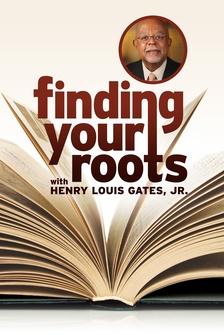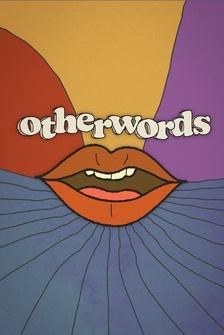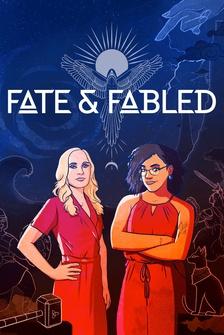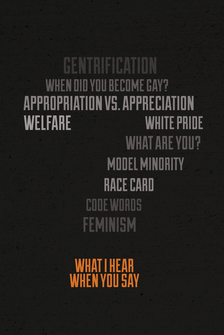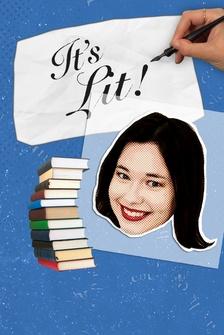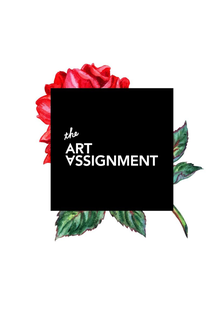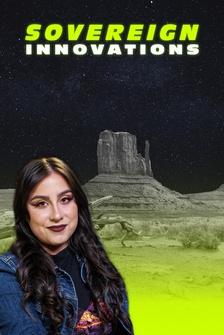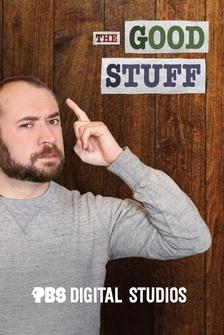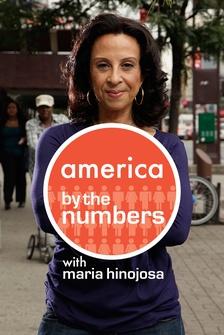-The aboriginal group called the Yolngu have lived up here on the coast of east Arnhem Land for 50,000 to 60000 years, if not longer.
♪♪ They've lived on this land since before the pyramids were built, before the ice age ended.
While empires rose and fell all around the world, the Yolngu were passing on their culture from one generation to another.
-[ Singing in Yolngu Matha ] -Literally thousands of generations over the millennia, ensuring the continuation of their knowledge of the land and the people that have lived on it.
♪♪ The Yolngu of today embody every fiber of that legacy while at the same time moving those traditions into a new era, embracing modern techniques to buttress the ancient ones, all with one simple goal in mind -- to pass their knowledge on to the thousands of generations yet to come.
-[ Singing in Yolngu Matha ] -I'm Ian Grant and I've spent the last three decades using my background in history and art history exploring cultures all around the world.
♪♪ In this series, I'll take you to places I've never been to before... ♪♪ ...experiencing local life through the lens of the world's artists, artisans, and keepers of culture.
This is "Culture Quest."
♪♪ ♪♪ -Gustavus Adolphus College equips students to lead purposeful lives and act on the great challenges of our time.
Gustavus.
Make your life count.
-Over a billion people live with preventable blindness.
See International partners with volunteer doctors to provide sight-restoring surgeries in underserved communities around the world.
-This organization is united in one mission -- to restore sight to the blind.
-They purify the air I breathe and the water I drink, keep me and the planet cool, and give me a career I love.
Trees.
When we take care of them, they take care of us.
-We all seek different in our own ways because different reflects who you are, who you want to be.
The Northern Territory.
Different in every sense.
-We're just pulling into Yirrkala.
It's right on the coast, and it's out of this little hub that incredible works of art are going out around the world.
And this unassuming building in the middle of Yirrkala is the center of it all, the Buku-Larrnggay Mulka Art Center -- a community-owned organization that collects and sells the art of the Yolngu people.
And this is Will Stubbs.
He's the manager of the art center here.
He quit his job as a criminal attorney in the '90s and, as he says, burned his suit and moved to Yirrkala.
He was hired by the Yolngu to manage the art center with a straightforward mandate from the community -- to balance cultural imperatives with market demand, or, as Will says, to act as a bridge between the Yolngu and the Western art world.
He's now been managing the art center and living here for well over 20 years.
Yeah.
Yeah.
Yeah.
Oh, okay.
Yeah.
Of that spot.
-Yeah.
-Okay.
Right.
The patterns refer to the history, the local knowledge, the thousands of years of understanding about each specific place represented in the world.
Only artists from those specific areas are allowed to paint those designs.
The bark they harvest from the forests, the termite-hollowed trees they paint on, all of the natural pigments for the paint they use -- it all needs to come from the land.
Even if it's a more modern twist, like using metal, that metal still needs to be salvaged from the land they are painting.
If I said to you, "Okay, no books, no videos, no diaries, no nothing.
Everything that you know and have learned is going to go with you when you die," you go, "Okay, yeah, alright."
In a couple of weeks' time, you're gonna wake up in the middle of the night going, "I need to find some young people."
-Yeah.
-"I had to put what's in my head into their head."
And this is the process.
This is deep in the heart of Yolngu culture.
This is why people are creating all the time, because they have to renew and refresh and reinvigorate and directly transfer that spirit and that feeling directly to a human.
-So these are tree -- they're termite-hollowed out tree trunks... -Yes.
-...out of eucalyptus?
-Yes.
-Mm-hmm.
Mm-hmm.
Oh, yeah.
Mm-hmm.
Mm-hmm.
And if I understand it correctly, the design applies to the person's bones or whatever the term is that's inside the larrakitj.
-Yeah, that's right.
So... -So, it's not just a... -This is another little bit of sea called [indistinct] belonging to the Dhalwangu clan of the Yirritja moiety.
-They would.
And it actually has sand on it.
-That's right.
-And is that this artist's own...?
-Artistic innovation?
Yes.
-Which is really cool.
-It's within this discipline.
-Mm-hmm.
-But it's untold creativity allowed within the observance.
-Didgeridoos, there from up here specifically, right?
But are they originally called didgeridoos or it's something else, right?
-Yeah.
-Oh, wow.
Yeah.
-Yeah.
-Okay.
-Originally pre-colonial times, the the ceremonial practice of using this as an instrument was restricted to the area where termites were so active that these were prevalent across the top end of the country.
The size and nature of the chamber is different in each case.
So it generates a different sound.
It's in a different key.
It's got different high notes.
And there's this huge back catalog of song -- you know, if you think opera or classical music -- and specific melodies that go with each song that Yolngu people are trained in.
So it's not generic music when Yolngu play it.
Actually, they're playing a particular song out of a repertoire that's ancient.
♪♪ -So much in the same way of the paintings.
-What you're seeing here is amazing, but this is a tiny little -- This is the surface shell of this massive, unseen body of knowledge that basically governs everyone's behavior around here.
I mean, there's all sorts of outside influences and distractions, but the way people process all of that is always done with reference of this huge body of knowledge.
-Do the artists bring pieces to you and then you...?
Okay.
Yeah.
Okay.
So, it's a collective.
Ah, so they bring in a piece, and they get paid for it.
So, the artists -- Oh, that's a great way of doing it.
Wow.
Will had us walk a few hundred yards down the road from the art center to visit one of the more prolific Yolngu artists, Barayuwa Munungurr, who was working on a new bark painting.
You mean to like take over the style and the place?
-Yeah.
Yeah.
-Right.
Because that is like -- you pass it from one generation to the next generation.
So you can dance this pattern as well?
-Yeah.
-Can you play this as well on the yidaki?
-Yeah, we do.
-Wow.
Yeah.
So all of that out of this?
Yeah, out of this pattern.
-Do you go to the art center to get the bark, or do you get the bark yourself?
-I get myself.
-Oh, you do?
So you go into the woods.
-Yeah.
-Yeah.
Oh.
So you do it from start to finish?
-Yeah.
-The whole thing.
And do you do make your own paint?
-Yeah, I do make it.
The red, yellow, and the black.
-And the black.
Okay.
Oh.
-Yeah, we just go down.
-Just go that way.
-Yeah.
-The tide goes out.
-The Yolngu get their colors from all variety of natural materials.
In Barayuwa's case here, from rocks.
And is that -- I saw you when we were coming in.
You make a little slurry, if you can see this over here.
You put this down first.
-Yep, water first.
-Water first.
-Then mix it up with this glue.
-And then that.
And then you grind in the color.
-Yeah.
So, you have everything you need right here to do this.
-Yeah.
-Barayuwa's work is finding its way to galleries and museums all over Australia and around the world, including the finished piece we saw him working on at his house.
[ Conversing in Yolngu Matha ] -This is Muluymuluy Wirrpanda.
She's a senior artist and a ceremonial woman member of the Dhudi-Djapu clan of the Dhuwa Moiety.
But she's not painting something sacred, so not everything is sacred.
What she's painting is a foodstuff that is called Bulwutja, which is... Muluymuluy insists that that knowledge persists.
And this plant, which grows in shallow water of billabongs and is a tube that is growing under mud, under water.
-Oh.
-You're not going to find it if you don't know.
-If you don't know.
Yeah.
-And... -Which means you have to know it exists.
-That's right.
Muluymuluy and another artist called Mulkun have championed the idea of getting these plants better known by breaking them out of the sacred representation and painting them.
This is a naturalistic representation of that plant.
But she's found her own design for it, her own pattern for it.
But there's no one who can tell her not to paint that because it's painted in a non-sacred form.
-So here it won't be "this person is a much better artist than this person"?
That doesn't exist?
-It's impossible.
Yeah.
-Yeah, okay.
That's what I get.
-Yeah.
-So anyone can can do -- any artist as long as they -- -Following the discipline.
-Yeah.
Yeah, exactly.
The center is actually divided into two parts that work hand-in-hand with each other -- the art center where we just were and the Mulka Project where we're now headed.
This is Joseph Brady.
Around 10 years ago when the Yolngu started exploring the idea of blending technology with their cultural traditions, they decided to hire a technology guru to help guide them.
After bringing him up to Yirrkala to check things out, Joseph packed up his young family in Melbourne and made the 2,000-mile move to join the Mulka Project as the center's program and technical director.
And he's been living and working here ever since.
-This is the Mulka Project.
It means "to hold" and "to protect."
Essentially, it's an archive.
All the old material, old photos, video, audio recordings, back to the 1920s to, like, yesterday.
Film makers, audio engineers, translators, cultural directors, directors that look after the content here.
Mulka functions like a production center.
Part of the responsibility that we have is to be producing new material that is reflecting what the current generations are doing.
You know, we've got three bosses.
One of them is the old people of today.
-Yeah.
Mm-hmm.
One of the main goals is to serve as, like you said, an archive, a cultural sort of archive.
Is that an alright way of putting that?
-It's the foundation of everything we do here is based on that material.
-Yeah.
-And those old films that we go out into the world and we shake down museums and... -Yeah.
-...and libraries and universities across the world who've sent people here.
You track the paths of anthropologists, and you find amazing caches of knowledge were given to anthropologists who sometimes really just scratched the surface of what they had.
And then when you bring them back here to people who understand the language, who understand the context, they're messages.
The Malka is a manifestation of that.
It's bringing these pieces back to the people who they were intended to be delivered to.
Having the art center here, having Malka, that blur between art and digital media happens, you know, and I think it was Wukun who very much pushed it in the beginning with a piece he did called "Nhina, Nhama Ga Ngama," which was "Sit, Look, and Listen," where he got five or six slices of [indistinct] dance footage from the archives over the generations spliced it together into a single work.
You know, that sort of crossover into the digital art world happened, and because these guys have got all these skills and learning new tricks and new ways of editing and documenting those skills can be applied into new forms of media and art.
Because Yolngu have such a strong foundation in their identity and who they are, they can push boundaries and still maintain that identity.
-This is Arian Pearson.
He was a long-time ranger in the outback up here, as well as a musician and composer, at one point playing in a band that toured all over Australia, as well as clubs in California.
He's also the manager of the Mulka Center's recording studios.
-Yes.
It's not like any other record label.
It's very spontaneous.
People come to me and say let's make a song on the spot.
It's just very flowing and spontaneous music.
So it's pretty amazing, really.
There are some artists that I work with who have their own songs.
-Yeah.
So they come in with written or something in their head.
-They have something to bring to the studio.
-Yeah.
-Then I just work with them in developing and recording them.
-[ Singing in Yolngu Matha ] ♪♪ ♪♪ -I think that's the foundation of, you know, Yolngu song lines as well.
So I really think we keep that strong through music.
But contemporary music also being able to mix both sort of cultures and mix music together, it's quite a powerful thing to be able to do that.
[ All singing in Yolngu Matha ] ♪♪ ♪♪ I think it's really important that Yolngu have a chance to express themselves through creative arts, but through technology and utilizing technology as well.
-♪ To see no division ♪ ♪ [Indistinct] we all need to listen ♪ ♪ Treaty in this country, there's nothing better ♪ ♪ Make waves of change, this is to remember ♪ ♪ You know, you know ♪ ♪ [Indistinct] with the ocean ♪ -Especially moving into the future, you know, like, you know, uniting contemporary creative technology with this 60,00-year-old culture.
-Which brings us to Yirrnga Yunupingu, one of the big up-and-coming musicians coming out of Yirrkala.
-♪ Mm ♪ ♪ Yolngu people living as one nation ♪ ♪ Sharing their dreams all around the world ♪ ♪ You'll never know if you'll never go ♪ ♪ This is a place that we are free ♪ ♪ Whoa [indistinct] ♪ [ Singing indistinctly ] -And we got to meet up with him in the recording studio here.
-[ Singing in Yolngu Matha ] ♪♪ ♪♪ -One, two... ♪♪ -Yirrnga, that was so great.
-Thank you.
-Yeah, thank you.
Thank you.
Thanks.
Thanks for letting us get in there.
-[ Indistinct ] -How long you been doing this?
-Three years.
Yeah.
-And they're all songs from your place, right?
-Yes.
-Yeah.
That go back forever.
-Yes.
-Do we have anything else we could listen to?
-Yeah.
One of his tracks.
This one here, It's one of the tracks he did.
-[ Singing in Yolngu Matha ] ♪♪ -This is you?
-Yeah, it's me.
-Oh, my God.
Yeah.
♪♪ That's you as well?
-Yeah.
♪♪ -Wow.
[ Chuckles ] When did you do this?
[ Indistinct ] -This is really awesome.
♪♪ Yeah.
Yeah, I got... [ Indistinct conversation ] ♪♪ ♪♪ -Arian and Yirrnga took me deep into a remote part of their homeland so I could see some of the wide-open expanses of wilderness up here and also to experience a couple favorite local customs -- hunting for mud mussels and kingfish.
So we're just kind of heading into these mangrove salt flats.
-Yeah, it's sort of like a tidal mangrove flat.
It sort of backs onto a creek and then the water flows up into the mangrove flats.
-And then we go and look for mud mussels, right?
-That's right.
Yeah.
-Oh, that's great.
So you find them with your feet.
-You can.
Yeah.
-Yeah.
Mud mussel.
That's cool.
-Yeah.
They're really tasty, too.
-Yeah.
-Yeah.
On the fire.
-You just throw them on the fire.
-Yeah.
-What makes -- How many do you kind of want?
-10 or 20.
-Yeah, that's a good catch?
-That's a good number.
-I finally got four so far.
Third degree burns on my neck, but for mud mussels.
Oh, hey, hey.
Five mud mussels.
How many do you think you got?
-Oh, it's probably like 40 or 50 there.
-Got our barbecue wood.
And now we're off to a favorite fishing and picnic spot of Arian's.
Kingfish run by here mainly twice a year on their migration route -- south in the summer and north in the winter -- making it a rare catch that Yirrnga was hoping a spot and land.
But as fishing goes all around the world, sometimes the fish just aren't there.
While we're waiting to find a kingfish, do you mind showing me this?
-Yeah, yeah.
-How to do this?
-Yeah.
Yeah.
-I'd love to learn.
That would be awesome.
-Take.
-Yeah?
You want me to take it?
Alright.
And then if you're -- I already broke it.
Alright.
So gets on there... With a little space between it and down here.
-[ Indistinct ] -Ah.
Oh, I took it out again.
Up like that?
-Yeah.
And straight.
-Okay.
Aim it straight, and then -- then do I -- let go here, right?
-Yeah, let go.
Yeah.
-Can I do it?
-Yeah.
Go for it.
That's it.
You got it.
-Oh, hey.
That was cool, though.
Alright.
Yeah.
-[ Indistinct ] -We were both admittedly a little disappointed not to see any kingfish.
But, you know what'll help?
Mud mussels.
-Yeah.
-We should go eat some mud mussels, right?
-That's right.
I think they're ready.
Let's go do it, right?
-Yeah.
-Yeah.
-Big Mac.
-And you just wait for them to open up.
-Yeah.
-So these are sort of a little bit of delicacy, you know, like everyone really loves these.
One of the most tasty mussels we get around here.
-Time for my first mud mussel.
Salty, but rich.
Buttery.
Spectacular, spectacular.
And ultimately, this is what it's all about -- the epic drive through the bush, along the beach, into the mangroves and out onto this panoramic view.
It's all about the land and the Yolngu's 60,000-year connection with it.
The paintings, the songs, the dances, the ceremonies that all describe what to catch in this bay and the next one over and each one after that, that educate you on the things you can find on the paths in the mangroves if you just know what to look for, that serve as a record for who lived under the branches of endless eucalyptus trees in this stretch of forest and the next.
All of that information is getting recorded in Yolngu art in all of its various forms for the next generations to learn from.
-[ Singing indistinctly ] ♪♪ ♪♪ ♪♪ ♪♪ -Gustavus Adolphus College equips students to lead purposeful lives and act on the great challenges of our time.
Gustavus.
Make your life count.
-Over a billion people live with preventable blindness.
See International partners with volunteer doctors to provide sight-restoring surgeries in underserved communities around the world.
-This organization is united in one mission -- to restore sight to the blind.
-They purify the air I breathe and the water I drink, keep me and the planet cool, and give me a career I love.
Trees.
When we take care of them, they take care of us.
-We all see different in our own ways because different reflects who you are, who you want to be.
The Northern Territory.
Different in every sense.
♪♪

